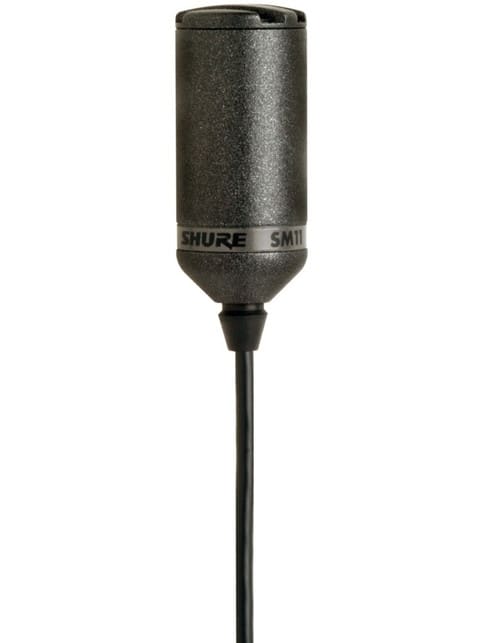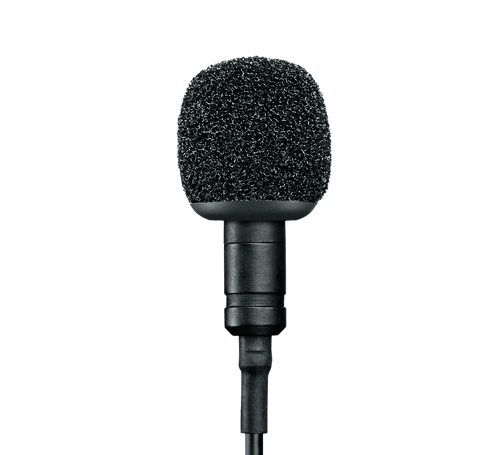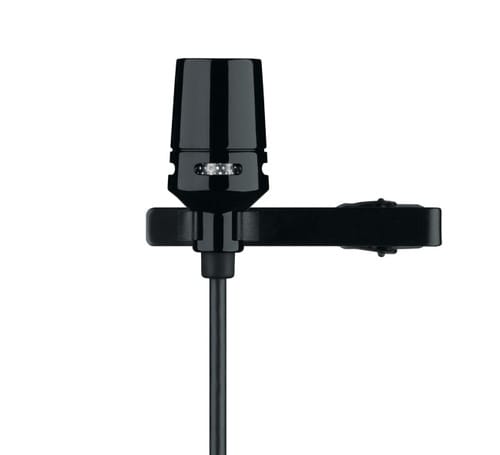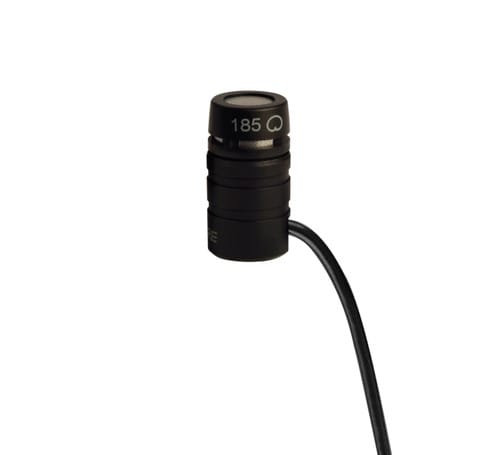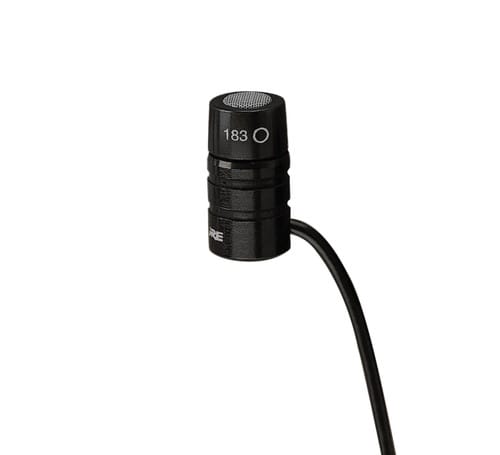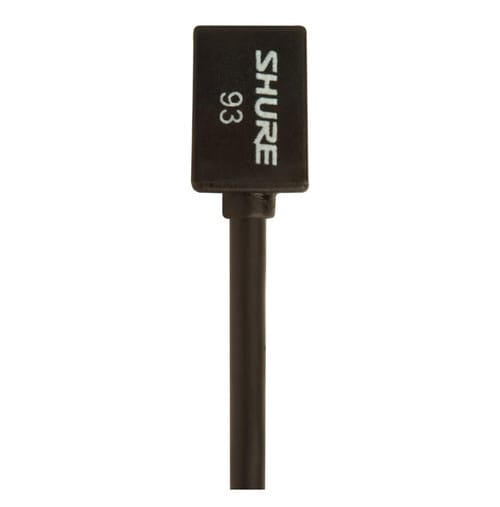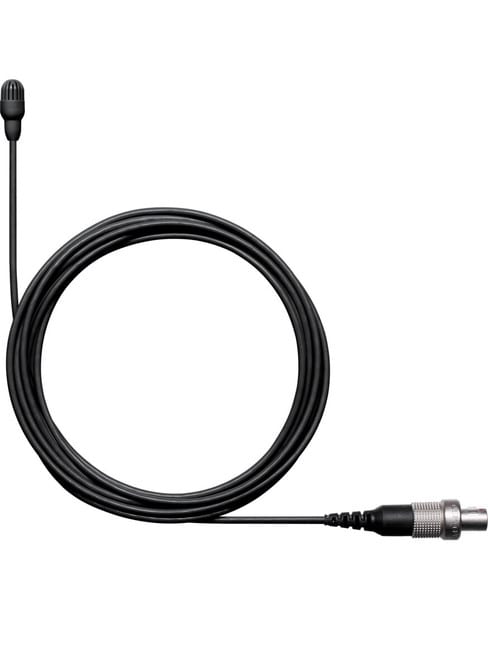Shure MX180/N brings sophistication to personal voice reproduction. Condenser cartridge options include cardioid, supercardioid, or omni polar patterns.
They're no bigger than a paper clip unless you consider the sound they produce. The Microflex Lavalier microphones bring a new level of sophistication to personal voice reproduction. Like all Microflex family microphones, the Lavaliers use Shure's interchangeable condenser cartridges, available in cardioid, supercardioid or omnidirectional polar patterns. That means you can be sure there's a Microflex Lavalier that's right for your job. Each Microflex Lavalier includes all the accessories you need.
The Microflex Lavaliers are completely compatible with all Shure Wireless transmitters, and their high sensitivity and wide frequency response guarantee great sound with a minimum of RF interference or electromagnetic hum. Plus, each Microflex Lavalier features the same Shure quality sound that has become an industry standard. But don't take our word for it. Just listen, and you'll hear how the best solution just got better.
Microflex microphones use interchangeable cartridges that allow you to choose the polar pattern for different installations. (Sold separately.)
Shure MX180/N Features
- Wide dynamic range and frequency response for accurate sound reproduction
- Interchangeable cartridges that provide a choice of polar pattern for each application
- Rotatable tie-clip that pivots in 90° increments for placement flexibility
- Dual tie-clip and belt-clip preamp
- Supplied with snap-fit foam windscreen that controls breath noise
- Balanced, transformerless output for increased immunity to noise over long cable runs
- RF filtering
- MX180/N Lavalier Microphone Housing1
- Transducer TypeCondenser
- Polar PatternInterchangeable with capsules (sold seperately)
- Frequency Response50 Hz - 17 kHz
- Output Impedance180 Ω
- Output ConfigurationActive Balanced
- Sensitivity (@ 1 kHz, open circuit voltage)
- Cardioid: –35 dBV/Pa(18 mV)
- Supercardioid: –34 dBV/Pa(21 mV)
- Omnidirectional: –28 dBV/Pa(42 mV)
- *1 Pa=94 dB SPL
- Maximum SPL (1 kHz at 1% THD, 1 kΩ load)
- Cardioid: 124 dB
- Supercardioid: 123 dB
- Omnidirectional: 117 dB
- Self Noise (A-weighted)
- Cardioid: 28 dB SPL
- Supercardioid: 27 dB
- Omnidirectional: 21 dB SPL
- Signal-to-Noise Ratio (Ref. 94 dB SPL at 1 kHz)
- Cardioid: 66 dB
- Supercardioid: 68 dB
- Omnidirectional: 74 dB
- Dynamic Range (1 kΩ load, @ 1 kHz)96 dB
- Common Mode Rejection (10 Hz to 100 kHz) 45 dB, minimum
- Clipping Level (at 1% THD)6 dBV (0.5 V)
- Power Requirements11–52 V DC, 2.0 mA
- Cable1.2 m (4 ft)






